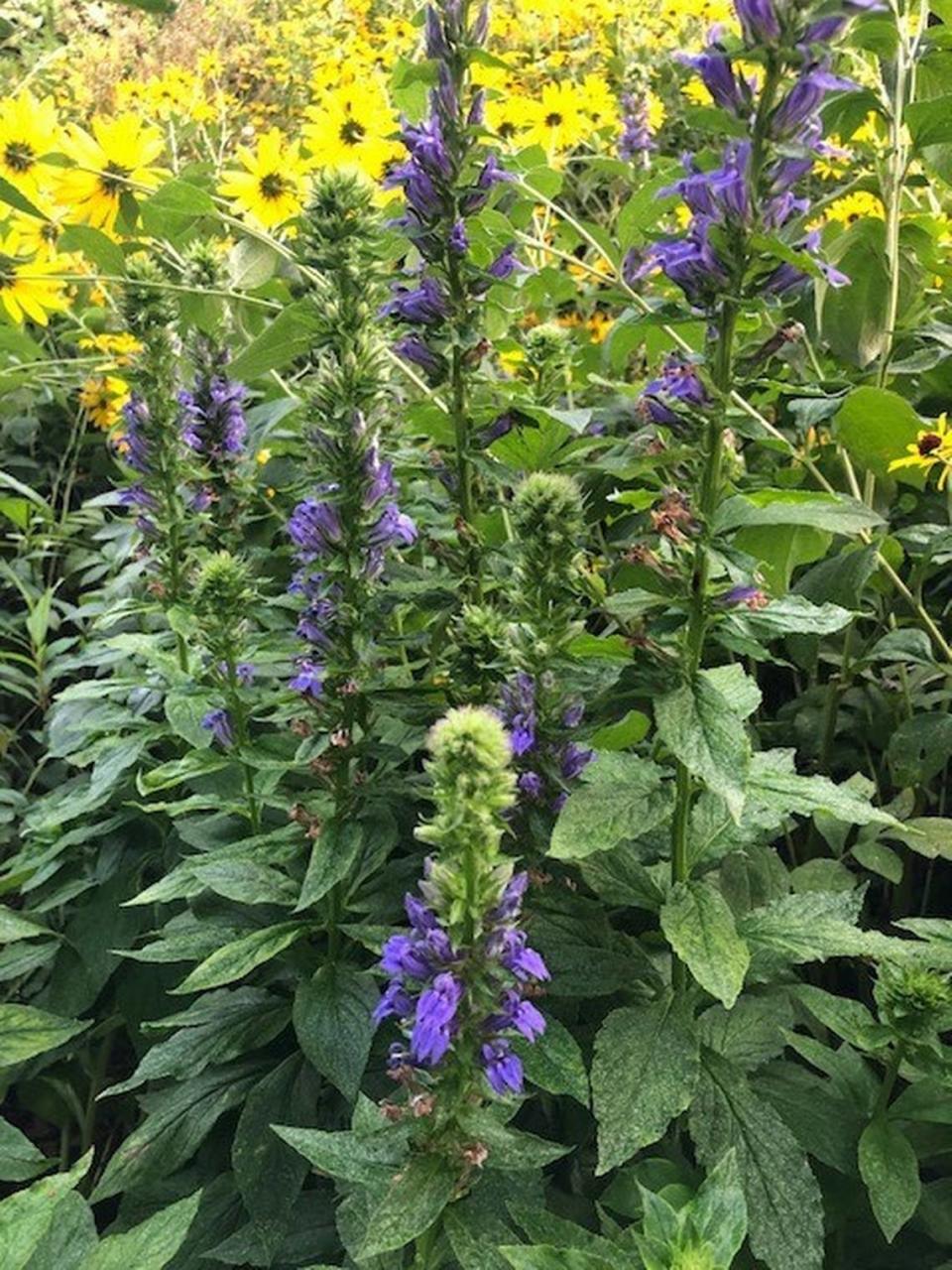Rainstorms flooding the garden? Take these suggestions to divert water
After a heavy rainstorm, managing water runoff becomes an issue for many homeowners. Standing water increases the likelihood of mosquitoes. Usually, there is no simple fix, but a couple of management tools may help solve problems by controlling the movement.
Both a rain garden and a bioswale slow the movement, allowing the water to soak into the soil and reduce flash flooding issues. As water drains off our property, it carries particles of soil and organic debris with it.
Phosphates, nitrates and other chemicals transported after a rainstorm affect the quality of water in your watershed. Compromised water quality is what leads to algae blooms and is harmful to wildlife. Knowing which structure is best for your property is the first step.
Rain gardens are characterized by a depression in the soil, collecting runoff from rooftops and driveways. They can catch up to the first inch of rain, allowing it to soak into the ground.
When properly constructed, rain gardens should drain, not have standing water within 24 to 48 hours of the rain event. Soaking into the soil quickly reduces issues with mosquitoes.
Rain gardens should not be placed in poorly drained locations as added water compounds the drainage problem. Construct it 10 to 15 feet away from the home to prevent foundation issues with the additional moisture.
Include a mixture of native grasses and perennial plants with deep, fibrous roots to break up the soil and aid in water movement. As a side benefit, this mix of plants can serve as a habitat for pollinators and birds.
Bioswales are channels collecting the rainwater runoff. As the water moves through the channel, the mixture of native plants slows the movement and increases infiltration to remove pollutants.
Unlike a rain garden, the filtered water leaves the bioswale instead of collecting it. Bioswales can be used in combination with a rain garden. The swale moves the water to the rain garden to thoroughly soak into the soil.
In my experience through Extension assisting people with drainage issues, bioswales may be the best option. Many people deal with poorly drained or eroding soils from water movement.
A properly constructed swale will channel the rainwater, slow the movement, and provide environmental benefits. The goal is not to trap additional water on the property with a rain garden.
The upcoming Johnson County Extension Master Gardener Garden Tour includes an example of a bioswale collecting runoff from a driveway. It channels the water through a network of plant materials before reaching the outlet.
The Householder garden is one of five on the May 21 and 22 tour. Tickets are available at various outlets or online. Complete information on the tour and how to purchase tickets can be found at johnson.ksu.edu or by calling 913-715-7000.
Water issues often have no simple solution but knowing your options is one of the first steps to take control of the problem while making lasting improvements to your property and the environment.
Dennis Patton is a horticulture agent with Kansas State University Research and Extension. Have a question for him or other university extension experts? Email them to garden.help@jocogov.org.


